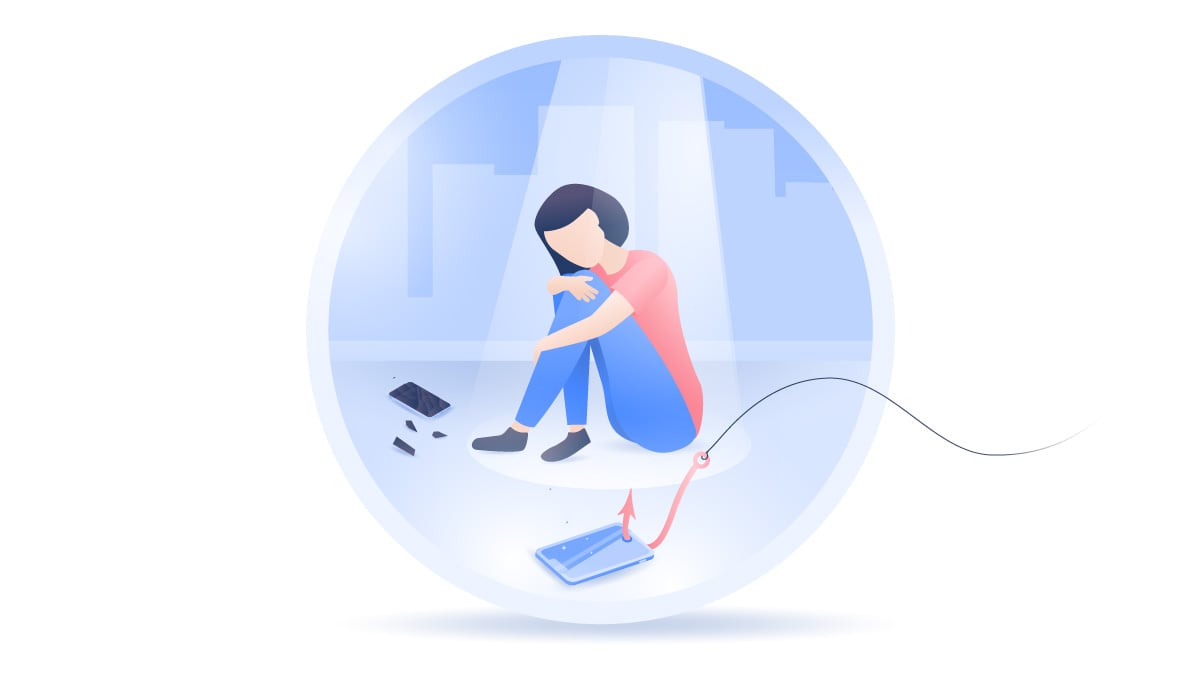How to spot and stop online human trafficking attempts
Human trafficking is a global industry that affects millions of people every year. It’s easy to think of slavery as a thing of the past. Unfortunately, modern forms of slavery exist all around the world, with the internet now playing a central role. Men, women, and children are forced into criminal and sexual exploitation, marriage, and various kinds of labor.

Read on to find out what tricks and tactics human traffickers use to lure people in, and how you can protect yourself and help others.
How do human traffickers lure their victims?
From obvious ploys to cunning manipulation, the tactics these criminals use come in many forms.
Catfishing online
It might be as simple as contacting someone through social media or a dating app and building a relationship. This approach takes more time, but it also helps the attacker gain their victim’s trust. With fake photos, fabricated stories, and a carefully crafted charming personality, these people are easy to fall for. The victim is eager to meet them in real life, but the dinner or drinks in a remote bar could end up being something else entirely.
Online relationships are particularly dangerous to children who tend to be more vulnerable. It’s not too difficult to gain their trust with fun stories and big promises. All the criminal had to do is find out what school a child goes to and wait for them there.
Cyberstalking
Cyberstalking is also popular among human traffickers. People tend to overshare online, giving criminals all the information they need. Location check-ins on Facebook and geotags on Instagram pictures can reveal where a person is at that exact moment. It also helps criminals put together their victim’s daily schedule and work out when and where they’re most likely to be alone.
“All the criminal had to do is find out what school a child goes to and wait for them there”
Phishing
Some of the tactics used by human traffickers are borrowed from cybercriminals’ toolbox. For example, they can get your number and send out a fake message with a malicious link that reveals your location when you open it. Unfortunately, many people fall for these kinds of scams and tap on the link without a second thought.
How to protect yourself and your loved ones
These are not small-minded criminals looking to trick you into giving away a few hundred dollars. Human traffickers use sophisticated tactics that are hard to spot and trace back to them.
But there are some red flags you can look out for when a stranger tries to contact you online. Follow these steps to protect yourself and your family.
- Don’t trust too fast. When you meet someone new online, maintain a healthy suspicion. Look for catfishing giveaways: they get too friendly too fast, ask very personal questions without providing information about themselves, and want to meet right away.
- Think before you post. Before sharing anything online, ask yourself the following questions. What information does your post give away to a stranger? How could they use it against you? Who will be able to see it? Consider changing your privacy settings so that only your friends and followers can see your content. And make sure you vet every account that wants to follow you before granting them access.
- Beware of phishing. This is a tough one. Badly written scam emails are easy to spot, but people still fall for them way too often. Experienced criminals put a lot more effort into their fake messages and the only sure way to stay safe is to doubt everything. Why is a courier trying to contact you? Are you expecting a package? Did this shipping company ever send you similar messages before? Is the URL shortened? If you have the slightest doubt, don’t open it.
- Talk to your friends and family. Let them know when you’re going to meet someone new. Give them information about this person and stay in contact throughout the night. And ask your loved ones to do the same – children or younger siblings are particularly vulnerable in these situations, so help them understand why it might be dangerous and how they should act to stay safe.
- Protect your online life. Use antimalware tools to protect your devices and encrypt your online activity. Store your passwords and other personal information in an encrypted vault and use NordVPN to protect your online communications. A VPN will also hide your virtual location and make you difficult to track down. You can use your NordVPN account to protect your family’s devices as well. NordVPN also offers the Threat Protection feature that ensures extra protection when browsing online.
- Look out for your loved ones. If you notice your friend or family member is being cut off from you by their new friend/love interest, it’s a serious red flag. Look for signs of abuse and manipulative behavior, and don’t hesitate to take action. Let them know you’re there to help and, if necessary, contact the police.
What you can do to fight human trafficking
We support the fight against human trafficking, so we partnered with a couple of non-profit organizations that work hard to pursue and dismantle criminal networks. Both Justice & Care and Deliver Fund participate in the NordVPN Nonprofits program, and we encourage our users to get involved and join the fight.
To find out more about modern slavery and human trafficking, and how you can help put a stop to it, visit their websites. From donating money to volunteering and organizing fundraisers, there’s a lot you can do to support the cause.
Want to read more like this?
Get the latest news and tips from NordVPN
